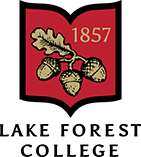 Voodooism in New Orleans and Vodou in Haiti
Voodooism in New Orleans and Vodou in Haiti
Voodoo is a religion that descended from the West African religion, Vodun. Vodun is has different names, depending on where it is practiced. In Haiti, it is called Vodou, in the Dominican Republic, it is called Vudu, and in New Orleans, it is called Voodoo.
During the early 1600s, the Fon people established the Kingdom of Dohamey which is located where Benin is currently located. Within the Kingdom of Dohamey, the Vodun religion was practiced faithfully. The Fon people within the Kingdom of Dohamey can be acknowledged as Dohameans. The Dohamey Kingdom ruled for three centuries. During the European colonization during the late 1800s and early 1900s, the French administration took over the Dohamey Kingdom and became the French Dohamey administration. The Fon people regained independence for their land and named it the Republic of Dohamey in the 1960s and in 1975, the name changed to Benin. Europeans shipped many West Africans to Haiti and other countries and with them, they brought their Vodun. The name changed along with the manner in which Vodun is practiced.
Voodoo/Vodou is a Religion?
Voodoo is a private religion and an oral religion. Other religions influenced the way in which it is practiced. In New Orleans, Catholicism is incorporated into some Voodoo rituals. Today, Voodooist use alters, the Virgin Mary, and the cross during their practices. It used to be practice weekly in Congo Square of New Orleans, before the Civil War, when slaves were given one day off from hard laborious work. Voodoo was a way for slaves to connect back to Africa and communicate with their dead relatives. A larger population of Voodooist came to New Orleans during the Haitian revolution in 1791, which further encouraged much of the practices that occurred in New Orleans.

